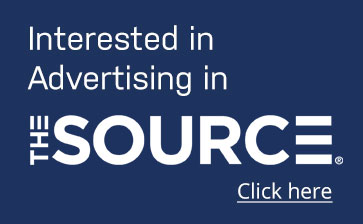Self-distribution can strengthen the supply chain if the conditions are right
No one knows better than those in healthcare how the supply chain turmoil over the last five years has impacted the industry—from raw ingredient supply and diversions to pandemic-related shortages and inflation. It has been unstable and unpredictable, making it hard for healthcare providers and their supply chain teams to adequately plan.

It’s no surprise then that many healthcare leaders wondered how they could build a more stable, secure and resilient supply chain, says Jason Hanson, VP, Strategic Sourcing and Supply Chain Solutions, HealthTrust. Inevitably, he says, the question arises: Is self-distribution right for my health system?
At first glance, self-distribution seems simple, he explains. “But most healthcare leaders will tell you it’s not for everyone and it is harder than you think. However, it can be worth the effort. Leaders of organizations operating this model will tell you it saved their systems during COVID.”
Many factors determine the level of success a health system will have with self-distribution. How can you determine if self-distribution is a good fit for your health system? Start by asking yourself the following questions:
Do I have enough medical supply volume to justify self-distribution?
HealthTrust found that $75 million in medical supply throughput with good product standardization can sustain an efficient operation that delivers total cost of ownership value to an organization. Depending on the complexity and structure of the model, the ROI can be anywhere from just a few months to a couple of years.
How close do hospitals need to be to one another to make self-distribution viable?
“When we design a distribution network, we try to limit the one-way distance to between 200 and 225 miles, max. This helps ensure smooth delivery operations and avoids situations where traffic congestion or accidents can prevent a driver from returning to the distribution center on the same working shift,” Hanson says.
Do we have sufficient executive support?
Moving to self-distribution is a major operational change. You need executive support not just at the IDN level, but also at the regional or hospital level, and it must be sustained for the long-term. It takes time to get self-distribution running efficiently. Without leadership committed for a minimum of five years, success is difficult.
What is the organizational culture?
If your IDN operates as a loosely connected group of individual hospitals running independently and making decisions unilaterally, self-distribution may be challenging. A culture with a shared vision and mission across all the hospitals is crucial for supporting self-distribution.
Do we have the financial basis to do this?
A self-distribution operation can ultimately save your IDN money, but it requires a significant commitment of capital up front and taking on some long-term liabilities, such as investing in a distribution facility, using warehouse management systems, starting inventory and purchasing material-handling equipment.
Are we appropriately staffed?
This is an area where healthcare leaders may stumble if they don’t fully understand the labor needed to run a self-distribution operation efficiently and effectively. For example, purchasing teams will have exponentially more transactions to manage and issues to deal with, requiring more full-time employees compared to purchasing from a prime med-surg distributor. The accounts payable staff will also be moving from one distributor invoice per hospital per day to 25 to 50 manufacturer invoices per day at the distribution center.
Does our IT staff have the technology & capabilities?
Self-distribution requires the use of a warehouse management system. These systems are expensive and require technical expertise. If you don’t have confidence that your current IT group has the skills or bandwidth, you’ll need a plan to bring in new talent or outsource a significant portion of the setup and ongoing work, which can be expensive and potentially even prohibitive to the project.
Going the self-distribution route is not simple, but it could be worth it, Hanson explains. “When designed properly and aligned to the organizational vision with the ‘why’ kept at the center of the project, self-distribution can be a competitive advantage and a strategic differentiator that brings significant operational and financial value to the IDN.”
It can be an intense undertaking to determine if self-distribution is the right move for your organization. To learn more, contact your HealthTrust Account Manager or jason.hanson@healthtrustpg.com to start the discussion.
Share Email Distribution, Q2 2024




